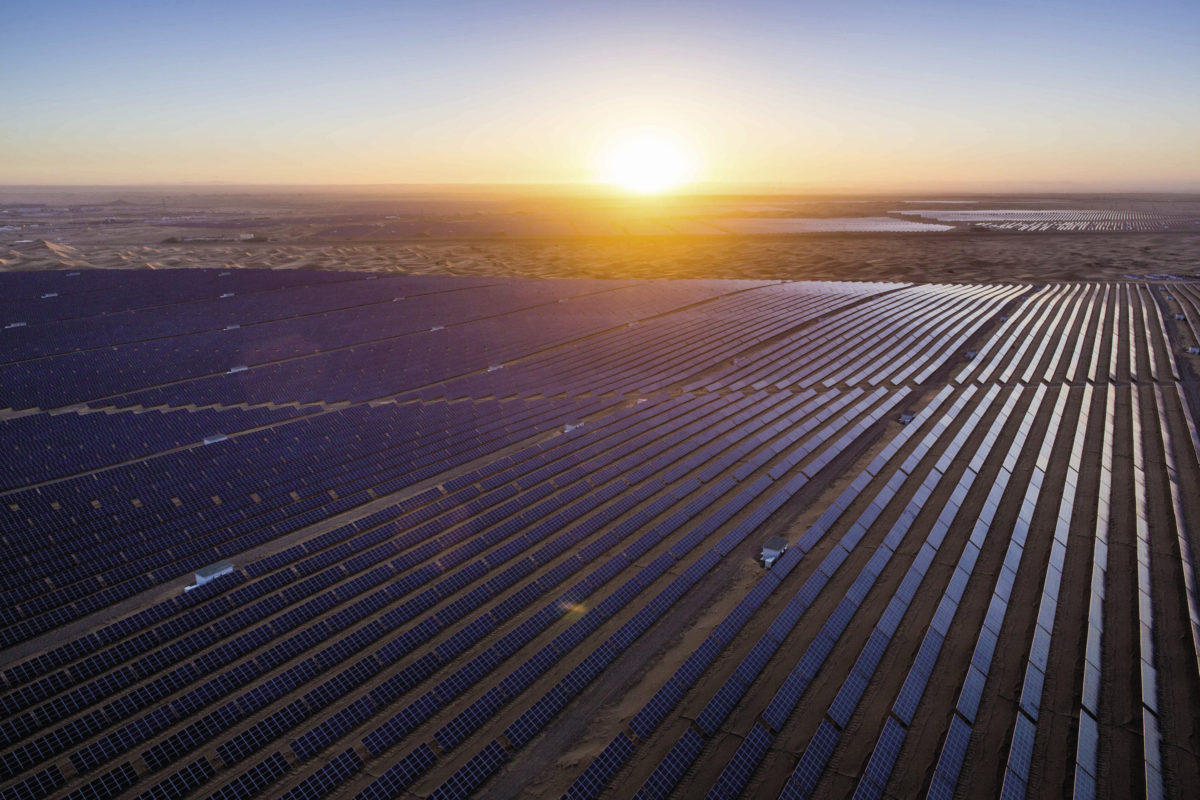From pv magazine Global
Professor of solar economy Christian Breyer and his team, at the Lappeenranta University of Technology in Finland, have revised upwards their outlook on the share that solar PV will have in the global electricity mix by 2050, from 68% to 76%.
In the Low-cost renewable electricity as the key driver of the global energy transition towards sustainability study, the Finnish team utilised its energy system transition model to demonstrate the economic feasibility of a global energy market based on a 100% share of renewable energy, and predicted solar, thanks to a global installed capacity of around 63.38 TW, may even reach a 69% share for total primary energy supply by the end of the first half of the century.
In the proposed scenario, in which the target to limit global warming below 1.5 degrees Celsius is achieved, end-use sectors such as transport and heating are almost fully electrified. Despite the strong drop in prices for electricity provided by solar and other renewables, however, the levelised cost of energy (LCOE) of the whole system is expected to remain constant at between 50€ and 57 €/MWh (AU$78 and AU$89/MWh) over the next three decades, as the energy transition will be also implemented with storage technologies, increased flexibility and the production of synthetic fuels. “We do not consider, any more, single-technology LCOE, but least-cost energy system solutions, which shifts the focus on[to] integrated solutions,” Professor Breyer told pv magazine.
In the study, however, the capex of all technologies required for system LCOE was indicated. “The PV capex is the most decisive,” Breyer added.
According to the group’s estimations, for example, the capex for a residential PV project is forecast to drop from €1,169/kW-installed (AU$1825/kW-installed) in 2020, to €826 (AU$1290) in 2030, €650 (AU$1016) in 2040, and €537 (AU$840) in 2050.
The cost for commercial PV is expected to reach €397/kW-installed (AU$620/kW-installed) by 2050, from €907 (AU$1420) in 2020; €623 (AU$974) in 2030; and €484 (AU$756) in 2040.
As for the industrial roofs, the capex is predicted to decrease from €682/kW-installed (AU$1066/kW-installed) in 2020, to €459 (AU$717) in 2030, €353 (AU$550) in 2040, and €289 (AU$450) in 2050.
Looking into the large scale business, the group provided prices for two PV plants: fixed structure and with single-axis trackers, and found the second category will experience a price drop from €638/kW-installed (AU$997/kW-installed) in 2020 to €429 (AU$670) in 2030, €330 (AU$515) in 2040, and €271 (AU$423) in 2050. As for the first category, it is predicted to achieve a capex of €246/kW-installed (AU$384/kW-installed), from €580 (AU$906) in 2020; €390 (AU$609) in 2030; and €300 (AU$470) in 2040.
The report also forecasts that renewables-powered desalination will be able to resolve the water scarcity issue, providing 3 billion cubic meters of clean water per day, and that power-to-x technology will be fully implemented.
“The results in our study describe a scenario that has been claimed as impossible according to IPCC reports,” Breyer said. “We are, however, able to show that with … comprehensive direct and indirect electrification of the energy system, and renewables-based electricity supply, the climate targets can be met without increasing the [cost] per unit of energy.”
Two recent studies, on the other hand, have separately shown that Intergovernmental Panel on Climate Change (IPCC) scenarios assessing global decarbonisation pathways are still predicting too-low future PV capacity and too-high LCOEs for the solar technology. A study from Aarhus University, in Denmark, has shown how the 2050 integrated assessment modelling (IAM) scenarios from the IPCC have underestimated PV over the past 14 years, and previous research conducted by scientists at the University of Geneva, in Switzerland, found that European entities expect a sharply higher compound annual growth rate for solar PV than their Asian and North American counterparts. It also noted that the growth scenarios of the IPCC are more conservative than other predictions.
This content is protected by copyright and may not be reused. If you want to cooperate with us and would like to reuse some of our content, please contact: editors@pv-magazine.com.









By submitting this form you agree to pv magazine using your data for the purposes of publishing your comment.
Your personal data will only be disclosed or otherwise transmitted to third parties for the purposes of spam filtering or if this is necessary for technical maintenance of the website. Any other transfer to third parties will not take place unless this is justified on the basis of applicable data protection regulations or if pv magazine is legally obliged to do so.
You may revoke this consent at any time with effect for the future, in which case your personal data will be deleted immediately. Otherwise, your data will be deleted if pv magazine has processed your request or the purpose of data storage is fulfilled.
Further information on data privacy can be found in our Data Protection Policy.